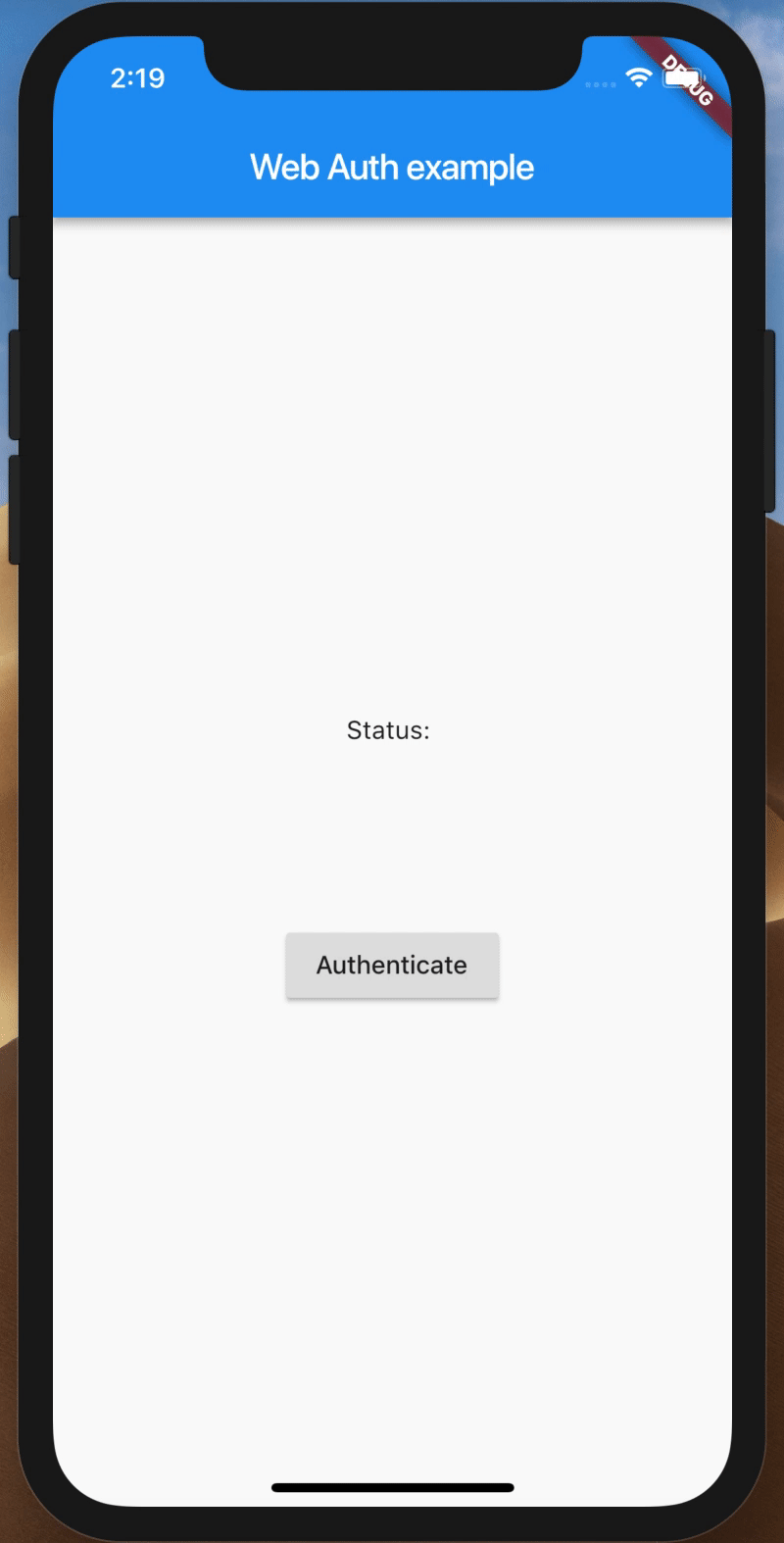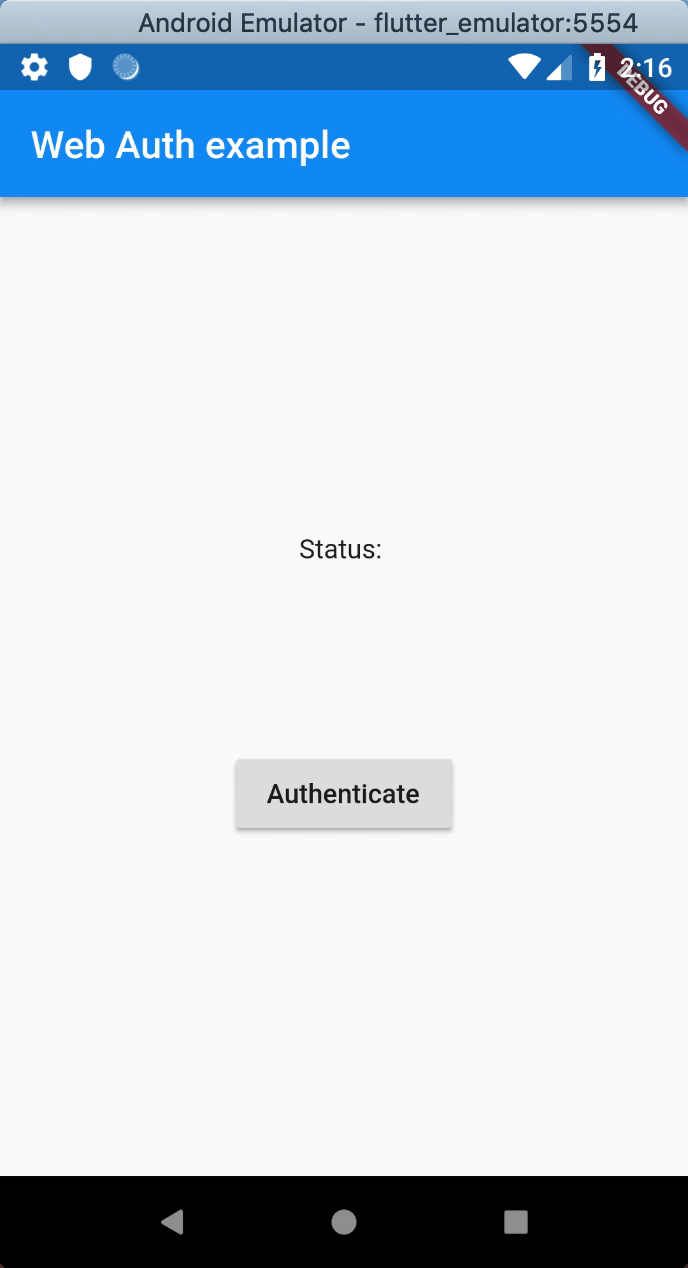A Flutter plugin for authenticating a user with a web service, even if the web service is run by a third party. Most commonly used with OAuth2, but can be used with any web flow that can redirect to a custom scheme.
In the background, this plugin uses ASWebAuthenticationSession on iOS 12 and newer, SFAuthenticationSession on iOS 11, and Chrome Custom Tabs on Android.
| iOS | Android |
|---|---|
 |
 |
To authenticate against your own custom site:
import 'package:flutter_web_auth/flutter_web_auth.dart';
// Present the dialog to the user
final result = await FlutterWebAuth.authenticate(url: "https://my-custom-app.com/connect", callbackUrlScheme: "my-custom-app");
// Extract token from resulting url
final token = Uri.parse(result).queryParameters['token']To authenticate the user using Google's OAuth2:
import 'package:flutter_web_auth/flutter_web_auth.dart';
import 'dart:convert' show jsonDecode;
import 'package:http/http.dart' as http;
// App specific variables
final googleClientId = 'XXXXXXXXXXXX-xxxxxxxxxxxxxxxxxxxxxxxxxxxxxxxx.apps.googleusercontent.com';
final callbackUrlScheme = 'com.googleusercontent.apps.XXXXXXXXXXXX-xxxxxxxxxxxxxxxxxxxxxxxxxxxxxxxx';
// Construct the url
final url = Uri.https('accounts.google.com', '/o/oauth2/v2/auth', {
'response_type': 'code',
'client_id': googleClientId,
'redirect_uri': '$callbackUrlScheme:/',
'scope': 'email',
});
// Present the dialog to the user
final result = await FlutterWebAuth.authenticate(url: url.toString(), callbackUrlScheme: callbackUrlScheme);
// Extract code from resulting url
final code = Uri.parse(result).queryParameters['code'];
// Use this code to get an access token
final response = await http.post('https://www.googleapis.com/oauth2/v4/token', body: {
'client_id': googleClientId,
'redirect_uri': '$callbackUrlScheme:/',
'grant_type': 'authorization_code',
'code': code,
});
// Get the access token from the response
final accessToken = jsonDecode(response.body)['access_token'] as String;Setup works as for any Flutter plugin, expect the Android caveat outlined below:
In order to capture the callback url, the following activity needs to be added to your AndroidManifest.xml. Be sure to relpace YOUR_CALLBACK_URL_SCHEME_HERE with your actual callback url scheme.
<manifest>
<application>
<activity android:name="com.linusu.flutter_web_auth.CallbackActivity" >
<intent-filter android:label="flutter_web_auth">
<action android:name="android.intent.action.VIEW" />
<category android:name="android.intent.category.DEFAULT" />
<category android:name="android.intent.category.BROWSABLE" />
<data android:scheme="YOUR_CALLBACK_URL_SCHEME_HERE" />
</intent-filter>
</activity>
</application>
</manifest>